Heat and Control is committed to creating a more resilient and sustainable food system, and a primary area where our R&D teams are exploring is by reducing carbon emissions.
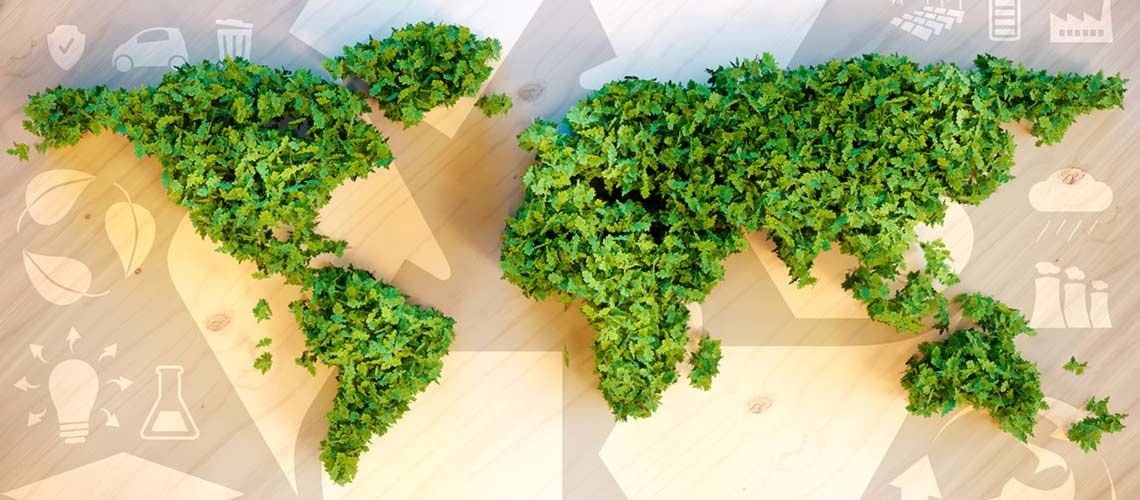
The world's population is projected to reach 9.8 billion by 2050, so the demand for food products, already high, is expected to grow even higher. Increased population levels and consumer demand for a greater diversity of products has led to the introduction of previously regional flavors to new markets. The greater volume of production during the food manufacturing process leads to increased pollution and waste levels, but combined with the inefficiencies when developing and producing new products and/or variations, creating a more sustainable food system becomes all the more urgent.
To address this, many industrial food manufacturers are adopting more efficient and sustainable production methods to increase profits, as well as to comply with legislative changes around climate change. For example, PepsiCo, Inc. recently announced they are accelerating their efforts to reduce absolute greenhouse gas emissions more than 40% by the end of the decade.
Heat and Control is committed to creating a more resilient and sustainable food system, and a primary area where our R&D teams are exploring is by reducing carbon emissions. They have been developing new approaches and enhancing existing methods of use to create innovative solutions around water and energy reduction technology, waste treatment/reductions, utilization of reclaimed or reused material, and ways to be environmentally friendly. A key challenge is reducing waste and pollution while at the same time finding ways to improve equipment design to increase production efficiencies both in the equipment and in the manufacturing process.
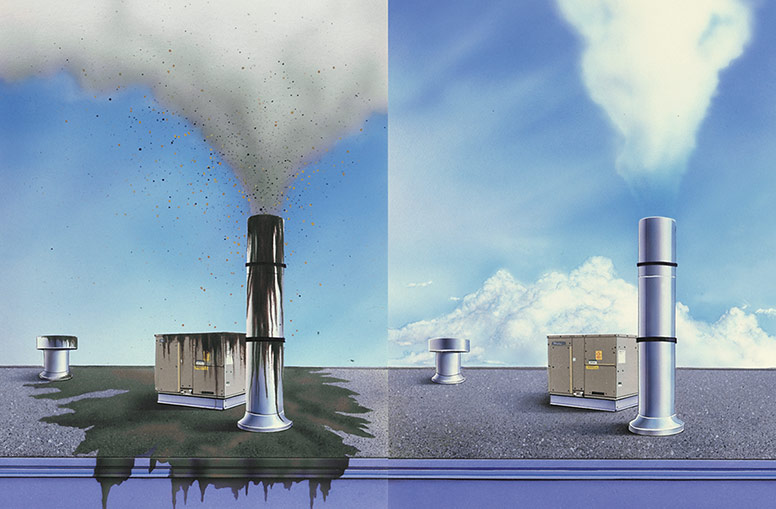 Heat and Control has developed several heat exchangers that combine the incineration of fryer exhaust pollutants with high-efficiency oil heating to help processors meet emission control regulations. Also, many of our snack systems are now complemented with energy saving and pollution control systems.
Heat and Control has developed several heat exchangers that combine the incineration of fryer exhaust pollutants with high-efficiency oil heating to help processors meet emission control regulations. Also, many of our snack systems are now complemented with energy saving and pollution control systems.
The KleenHeat® Pollution Control Heat Exchanger incinerates and removes virtually all odors, oil, and other particulates from fryer stack exhaust that would normally pollute the air and the area around a production plant. Our latest graduated density oil heating tube bundle provides 10% greater thermal efficiency than existing models and is fully compliant with international standards, including US, EC, and Australian regulations.
Designing innovative ways to reuse previously exhausted waste gases can increase production efficiency and save energy costs while reducing carbon emissions. The Heat and Control Heat Exchanger with combustion air pre-heater (and Booster Heater) can preheat cooking oil to boost fryer production up to 11 – 15% with no extra fuel consumption, up to 85% thermal efficiency.
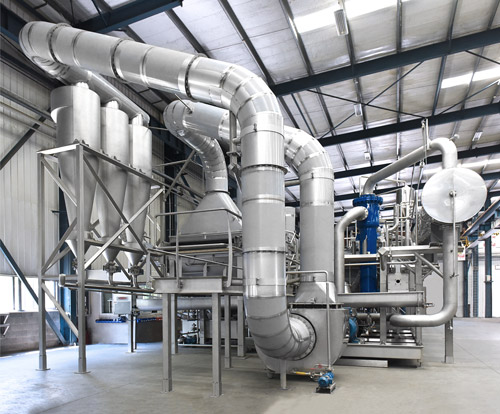 Frying oil can be an expensive part of food processing and any step(s) the processor can use to reduce loss or waste of oil will likely result in greater business profitability. Oil recovery during production not only reduces energy usage but also translates into higher yields through cost savings. Where cooking oil is used during production of the finished food product, increasing the oil life has been a solution that many food manufacturers choose.
Frying oil can be an expensive part of food processing and any step(s) the processor can use to reduce loss or waste of oil will likely result in greater business profitability. Oil recovery during production not only reduces energy usage but also translates into higher yields through cost savings. Where cooking oil is used during production of the finished food product, increasing the oil life has been a solution that many food manufacturers choose.
During french fry production, the Oil Sweep® System recovers fryer oil by removing solid fines through a bank of cyclones; the reusable oil is then transferred by a pump back into the frying system.
Another method is by using a heat exchanger to manage the use of oil. Low oil volume promotes fast oil turnover and inhibits the formation of free fatty acids. A rapid, uniform heat transfer allows a fryer to respond more quickly to changes in product load and protects oil quality by maintaining a low oil film temperature.
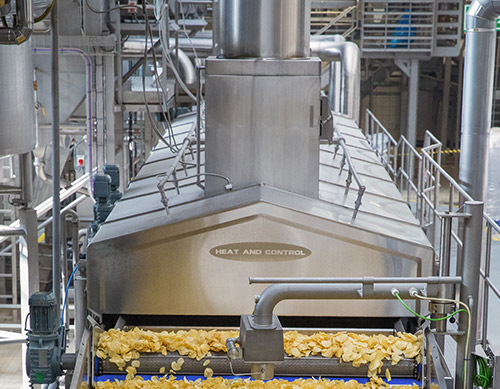 Where water is used for product or equipment cleaning purposes, increasing the use of recycled water offers many benefits. High levels of water usage can be costly for food manufacturers, so we developed the Heat and Control Water Cleanup System (WCS) for the slice washing system, which reduces freshwater usage up to 50% over conventional slice washing systems. WCS cleans and reuses wash water, concentrates starch and fines for more efficient removal, and reduces sewer loading and the burden on a starch recovery system.
Where water is used for product or equipment cleaning purposes, increasing the use of recycled water offers many benefits. High levels of water usage can be costly for food manufacturers, so we developed the Heat and Control Water Cleanup System (WCS) for the slice washing system, which reduces freshwater usage up to 50% over conventional slice washing systems. WCS cleans and reuses wash water, concentrates starch and fines for more efficient removal, and reduces sewer loading and the burden on a starch recovery system.
We also developed the Heat and Control Oil Mist Eliminator that removes oil mist from fryer exhaust without water or high-horsepower fans and a heat recovery system which recovers typically lost heat from the fryer exhaust stack. This system condenses otherwise wasted steam to make hot water for blanching, sanitizing, or even building heat.
We offer four standard sizes of our Heat and Control Stack Heat Recovery Units (SHRU) and can also tailor design an application to a customer’s needs. Absorption chiller technology is becoming more common in hotter areas for building air conditioning and our SHRUs acts as an ideal heat source.
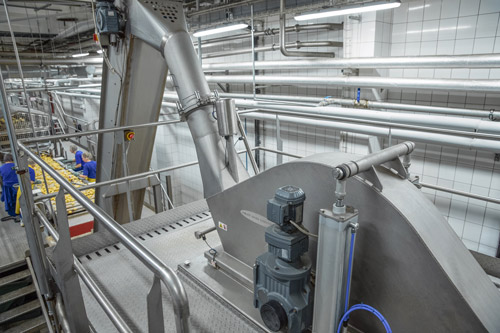 In potato production, a necessary but costly part of the process is the need to blanch potatoes before cooking. By using pulse electric field processing technology to perforate the cell walls of the potato, the Heat and Control E-FLO® system creates micro holes that allow asparagine and sugars to be reduced and washed out of the potato in a cold water wash. The tissue of the potato becomes more permeable, which can eliminate or reduce the need to blanch the product before cooking. E-FLO can also increase yield which reduces energy used to produce a pound of finished product.
In potato production, a necessary but costly part of the process is the need to blanch potatoes before cooking. By using pulse electric field processing technology to perforate the cell walls of the potato, the Heat and Control E-FLO® system creates micro holes that allow asparagine and sugars to be reduced and washed out of the potato in a cold water wash. The tissue of the potato becomes more permeable, which can eliminate or reduce the need to blanch the product before cooking. E-FLO can also increase yield which reduces energy used to produce a pound of finished product.
When sourcing equipment for their plants, food manufacturers should look for equipment that incorporates innovative manufacturing designs that reduce pollution and waste levels. Reducing the environmental impacts of processing can lower energy use, pollution, and overall costs and provide food manufacturers with innovative technology that will provide a significant return on investment and help create a more sustainable food system in the years to come.